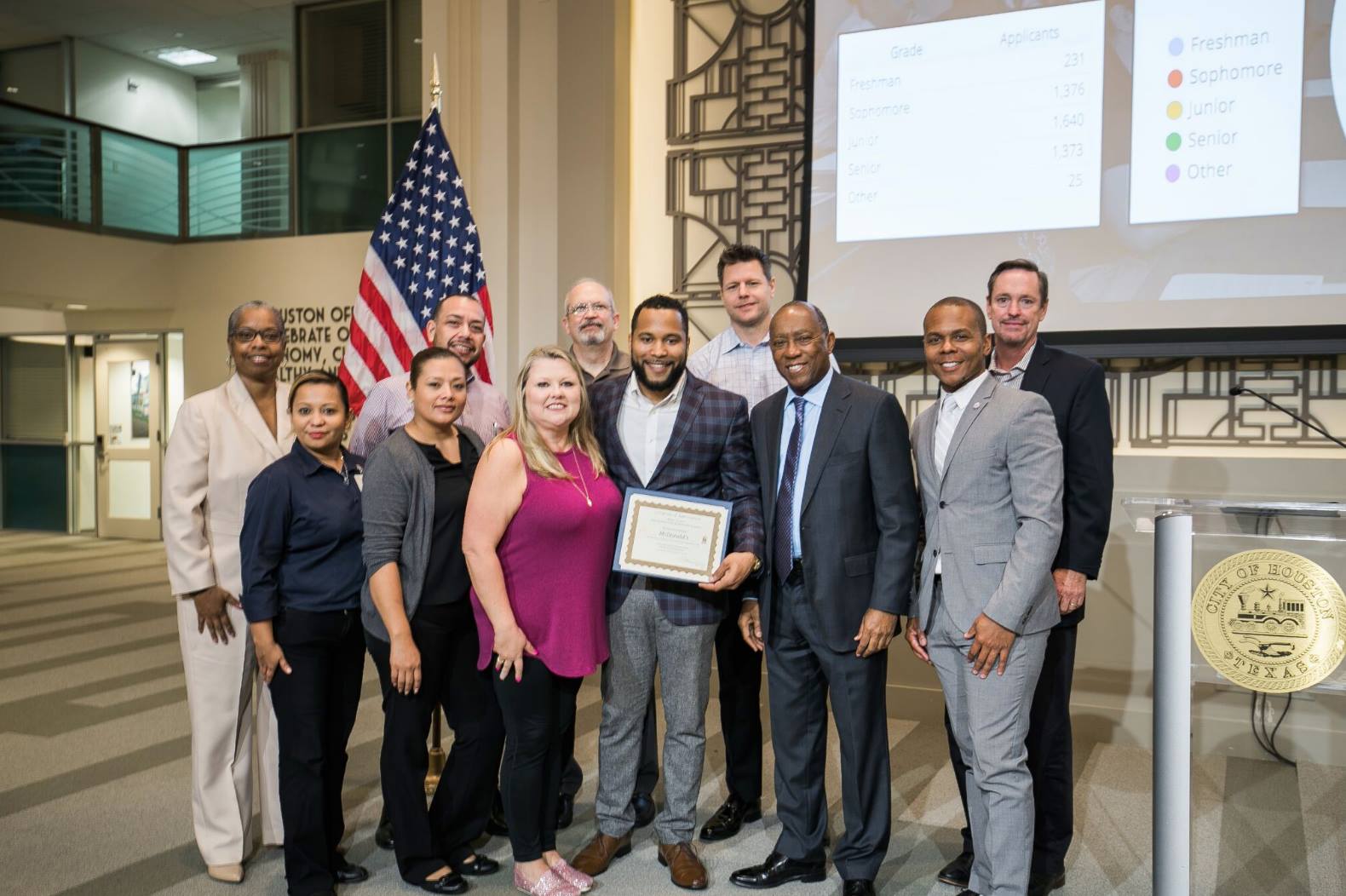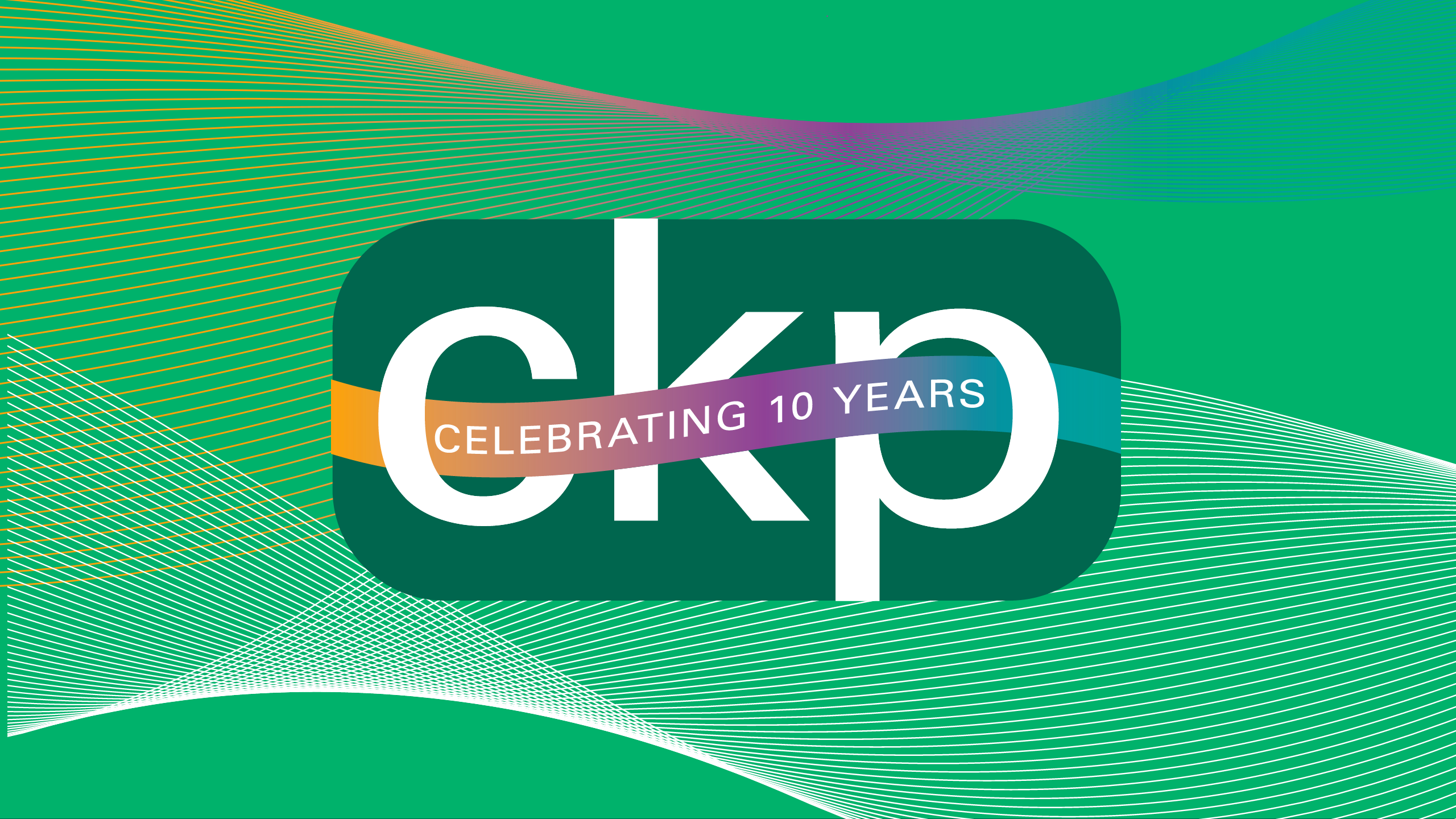Corporate social responsibility debunked: Pro tips to getting it right

CKP client McDonald’s Houston Owner/Operators partner with Mayor Sylvester Turner and the City of Houston to hold a series of on-the-spot hiring events for Houston youth.
Of the many areas of branding in which my company works, I’m most proud of our work for clients in community engagement and corporate social responsibility. As an agency, we practice what we preach in our investments of time, talent and money through a variety of community efforts.
Community engagement is simply part of our DNA. Our team members serve on volunteer committees, participate in team-building activities, receive our agency’s matching gifts for charitable donations and act as subject matter experts for nonprofits and corporations on this and related topics. I know that participating in philanthropic collaborations is good for our culture and the communities in which we work alongside brands and partners — and frankly, it’s good for business.
A myriad of actions are involved in building and fostering a corporate social responsibility platform. Numerous factors often must be taken into consideration to develop an effective approach, including industry, communities where employees are working and living, sustainability, community impact requirements, executive will and business culture. Consequently, it’s a bit difficult to condense the process down to a step by step approach. In our work with clients in multiple industries, we’re often asked to guide this process.
But if we could crystallize the process down to key steps, below are the most significant in achieving success.
Step 1: Engage internal stakeholders
The internal stakeholders most often driving corporate responsibility development include groups and people such as the c-suite, human resources, public affairs, HSE (health, safety and environment), diversity and inclusion, business development, risk management, investor relations and general counsel. Regardless of where the pressure comes from or which team inside the business will head up your social responsibility plan, discovery is often required to compel stakeholder groups to participate in discussion and in execution.
Discovery is the process of internal data mining. One-on-one interviews, email surveys and department focus groups can reveal areas of shared values and areas where negotiation might be necessary to find common ground. Discovery has one big additional benefit: buy in. As it’s often said, people support what they help create. This process helps pave the way for messaging and goal-setting, and it’s the foundation of “permission to play” standards that will shape the program and impact your company culture.
Step 2: Create a communications plan
Formalizing a written document that’s accepted as a doctrine, like any marketing campaign, helps to align activities with goals, measurable objectives and key performance indicators. Without it you run the risk deviating from its purpose and the return on investment it’s meant to provide—internally and externally.
In your communications plan, include strategies for internal and external messaging with consistency using any and all forms of communications. This process frequently includes the development of communications tools such as key messages, reports, program guidelines, content marketing strategy, external stakeholder and advocate prospect lists, employee engagement programs, media relations and investor relations strategy, partnership prospects and program budget.
For example, if one of your goals is brand reputation, then you will need a public relations department (or consultant) that can activate reporters and influencers. If your goal is to heighten employee morale, then your communications plan must include some form of internal communications channel (ex: email) to keep your team informed of opportunities and impact. If your goal is civic engagement, turn to social media and engage with community partners through effective content.
Step 3: Build partnerships that engender pride
Employee pride is a key factor in community engagement. Regardless of whether you work for a global business or a mom-and-pop shop, offer opportunities and share good news that your employees can embrace. Similarly, take into consideration your vendor, investor and client interests, as well as those of the communities where you do business, as you consider community partnerships. Too often, I see businesses make social investments that don’t align with one or more of these groups’ passion and engagement. This usually results in a one-time engagement and a failed relationship.
Step 4: Activate third partner endorsements
Our first goal in helping brands develop partnerships is to identify all of the assets they can bring to the table. Cash is just one of these assets, so don’t be intimidated by deep pockets around you.
When helping brands develop a partnership, we identify all of the assets the partner can bring to the table. Do they have a strong social media following? Are they often mentioned by press? Do they have a robust newsletter that reaches your company’s target consumer? Can they provide a unique experience to your employees or stakeholders?
Then, we negotiate the best collaboration possible. More often than not, we’ve found that a proper acknowledgment of a client’s partnership is overlooked or not discussed.
Ensure that you negotiate investments and community programs with partners who are willing to endorse the goodwill of your exchange just as you endorse their role. The external marketplace and the media world often ignore self-promotional press releases, pitches and campaigns to attract attention about your good deeds. That said, effective storytelling is an important part of social responsibility success both for the donor and recipient. If a respected charitable organization, a school district leader or a civic influencer can be given the tools to thank your business and extend public appreciation, people will take notice.
Those tools could mean a social media messaging kit with suggested messaging, social channel mentions and images that portray both sides in a positive light. Or suggested language to acknowledge your investment in a way that’s beneficial to your specific marketing goals and objectives. Or a video you create to be played publicly at an event.
Step 5: Measure, tweak and repeat
The measurement component of corporate social responsibility programming is often neglected or simply not addressed in communications planning. Even if metrics are built with hard numbers such as environmental benchmarks, some of the measurements around soft goals and associated brand-forward work can be unwieldy. Further, the bar can shift over time as the environment around us and the leadership in place changes. Evaluate your metrics for success on an ongoing basis.
Ask questions like “Are we seeing success?” and “Do we need to tweak the strategies or the tactics?” In the act of doing good, we should typically have some sense of what success looks like because it affects the reputation of the business from the inside out. Make sure that measurement is refreshed at least annually. In the absence of it, one bad quarter or one bad year may put your corporate social responsibility program on the red line list in budget cuts.
And most importantly, be open to evolving with time and respond to the interests of your team and your community. The dialogue, which is organically embedded in all aspects of building your corporate social responsibility, is a sure way to become and stay relevant to people that matter to you.
A version of this article first appeared on Forbes.
More Blog Posts

Let’s be real—communication at work is kind of like a group chat. Some people over-share, some barely respond, and others...

Once upon a time, PR meant faxing a press release and hoping someone, somewhere, had paper in their machine. All...

Employee Appreciation Day, recognized on the first Friday in March, will be celebrated this year on March 7. It is...

1. The Power of Sustained Impression (Or: Stop Passing Out at First Dates) Let me tell you about a date...


